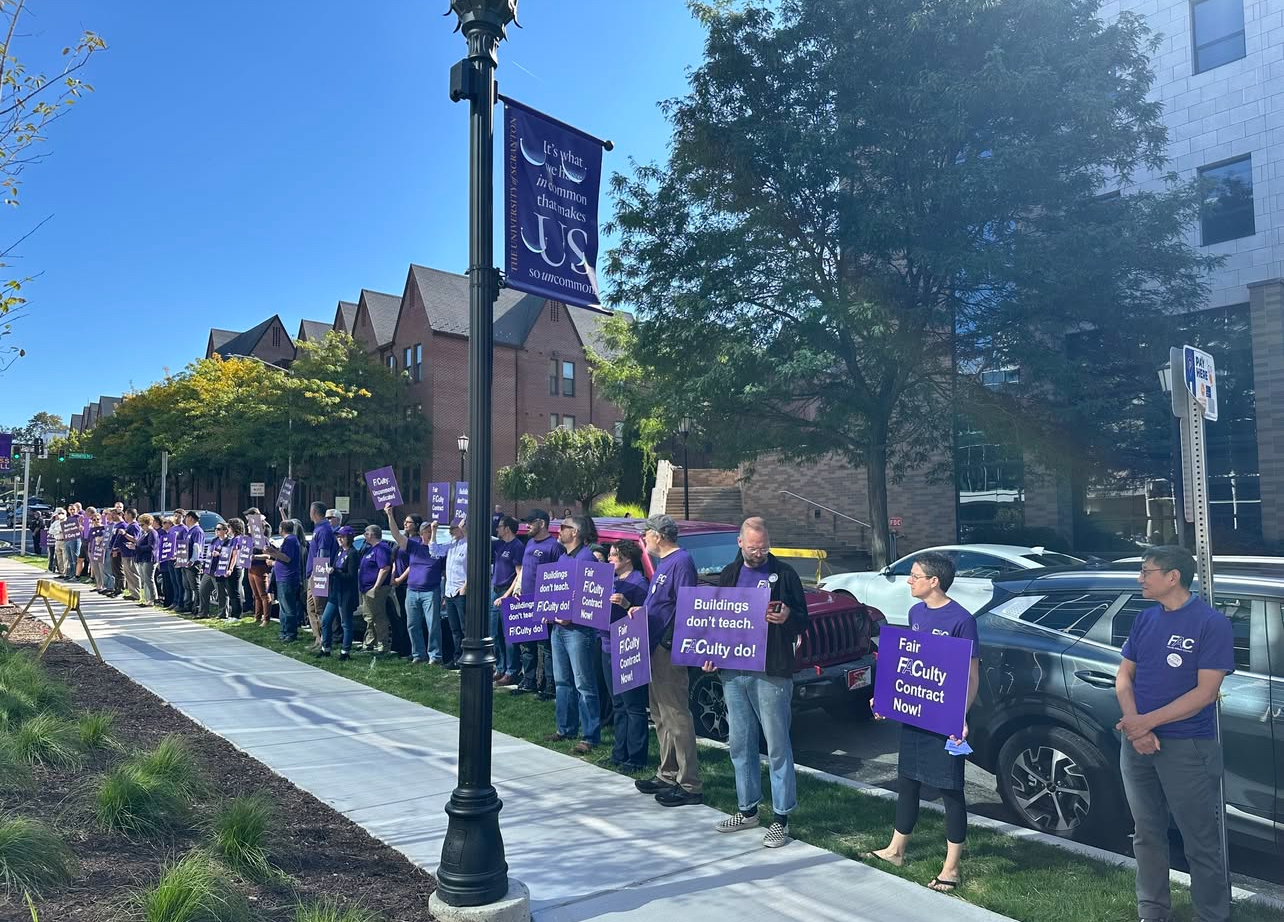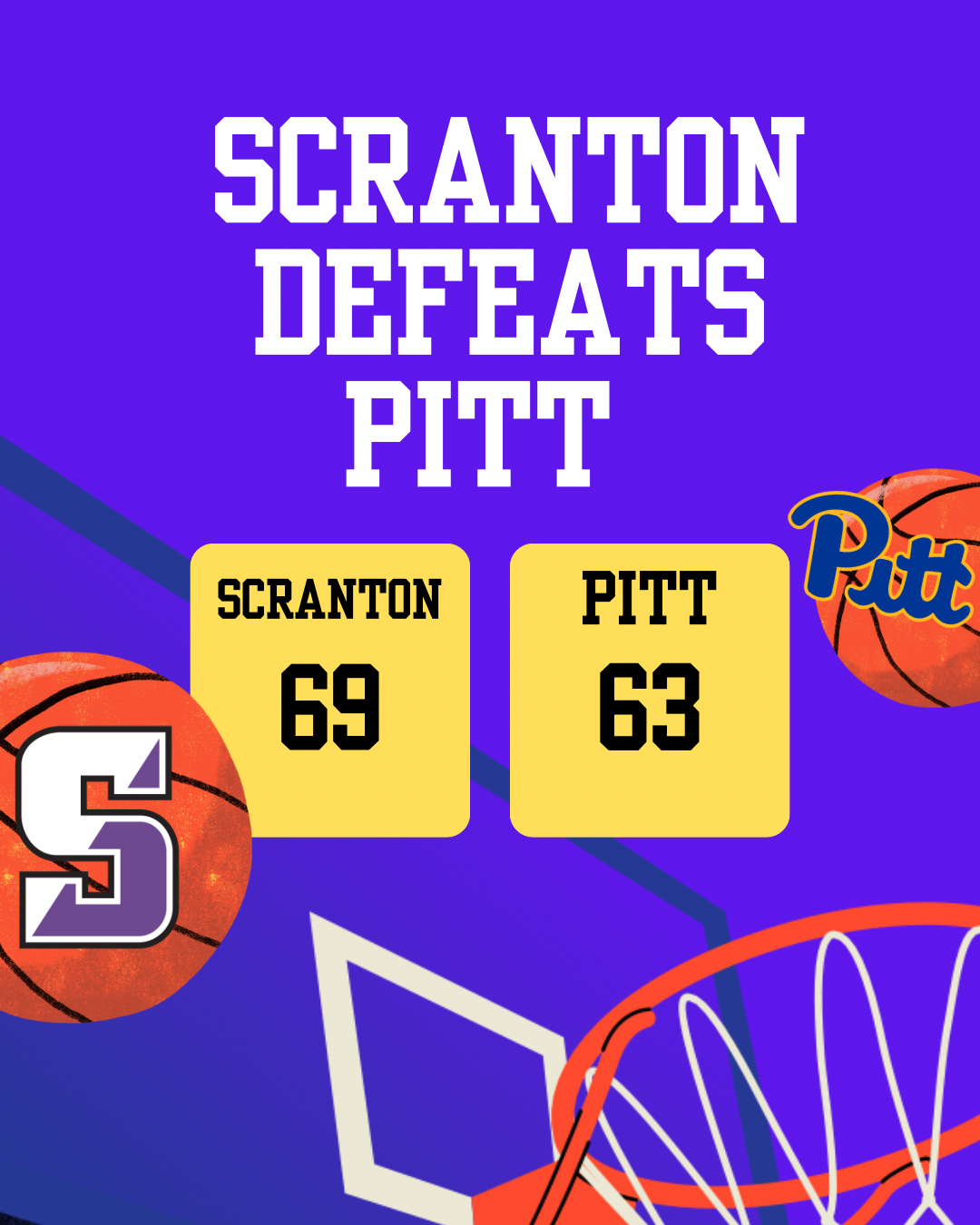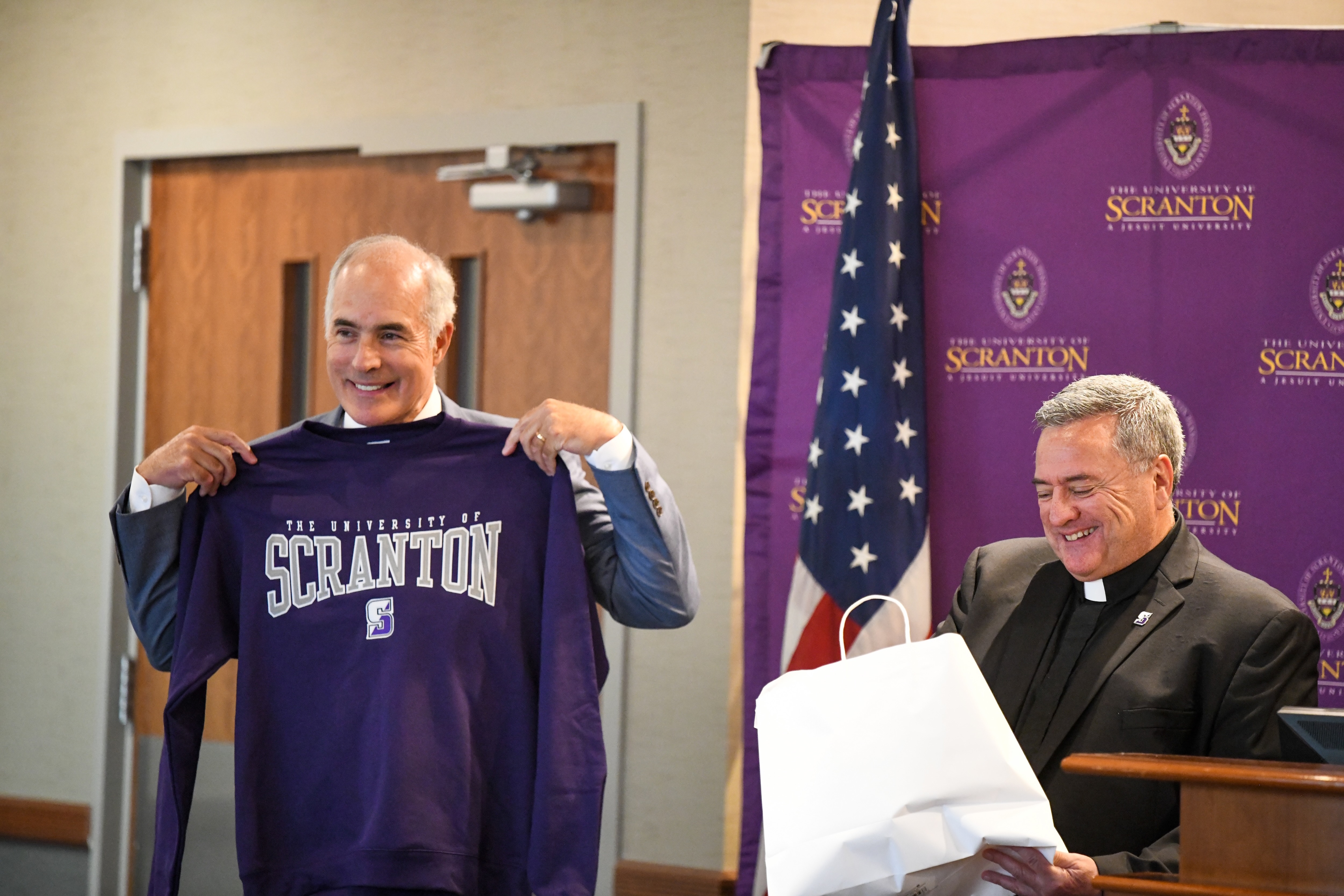On March 13, the Physicians for Social Responsibility Pennsylvania presented the findings of their radio- active emissions study on fracking wastes.
The town hall meeting was in the Loyola Science Center Auditorium. Attendees included students from The University of Scranton, the NEPA Green Coalition, the Friends of Lack- awanna nonprofit organization and virtual participants.
The PSR PA is a nonprofit striving to protect the health of Pennsylvanians one community at a time, PSR PA Executive Director Tonyehn Verkitus said. Verkitus’ team traveled to Scran- ton to notify community members about power plant facilities and land- fills in Lackawanna County that are producing air pollution, Verkitus said.
For example, Lackawanna Energy Center in Jessup is about a 15-minute drive from The University. It is ranked fourth for having the most direct greenhouse gas emissions in Pennsyl- vania, according to the environmental organization PennEnvironment and their “Pennsylvania’s Dirty Dozen” list.
The PSR PA study involved col- lecting air, water and soil samples and using a Forward Looking Infrared camera for optical gas imaging. Tammy Murphy, environmental health ad- vocacy director, shared her experience sampling the air at MAX Environmen- tal Technologies Inc. in Yukon.
MAX is a hazardous waste landfill Murphy and other PSR PA members visited during the coronavirus pan- demic. The landfill guide asked them to try breathing the air without their masks, Murphy said. “Immediately my tongue went numb, my mouth was watering and I had a horrible taste. The only way I can describe it is like you lick the back of an envelope, it had that adhesive taste and did not leave my mouth for probably about four hours,” Murphy said.
Others had headaches and cough symptoms that subsided when their masks were placed back on, Murphy said. The landfill guide told Murphy that in five years 14 people who lived next to MAX died of cancer, Murphy said.
The PSR PA sampling detected toxicity, but the radioactive emissions were not as extreme as expected, Mur- phy said. Soil sampling from other landfills, pipelines, fracking sites and homes also surprised the team as the findings showed equal radioactive accumulations rather than major hot spots, Verkitus said.
The extractions from the facilities were within the legal limits, but what the limits should be from a public health perspective is debated, Murphy said. Low but constant detectable emis- sions can be more dangerous, Murphy said.
Christina DiGiulio, field thermog- rapher and scientific consultant, cap- tured the emissions of hydrocarbons from smokestacks at Lackawanna En- ergy Center with a FLIR camera.
Hydrocarbons, while permitted emissions, release carbon dioxide and other greenhouse gases when combusted, Society for Sustainability and Conservation President Emma Warras said.
The footage is a reminder of emis- sions the human eye cannot see unassisted, Student Government President Karla Shaffer said. Shaffer interned for the PSR PA and is deciding how her presidency can be a platform for eco-friendly campus initiatives.
The findings sparked student discussions about the air quality at The University.
Emily Burgers, environmental science major, said most times she does not have an issue breathing the air and feels safe drinking the water be- cause of the filtering systems.
“But there are times when the air has a foul smell or feels heavy to breathe in,” Burgers said.
The foul smell relates to observations the Friends of Lackawanna co-founder Michele Dempsey and Marywood University students made
about the Keystone Sanitary Landfill. The Friends of Lackawanna have been fighting against its proposed expansion and pungent odor, Dempsey said.
Marywood students also noticed the smell. They had air monitors placed on campus to track what was happening for an independent study, Verkitus said.
Installing air monitors in community homes is the PSR PA’s current project. Air monitors are an easy way to collect more data and engage citizens with their own advocacy tool, Verkitus said.
“We can all advocate for ourselves ... if you see, smell, hear something that is odd, just report it to DEP. A simple action like that is so helpful for what we do,” Verkitus said.
The DEP is the Department of Environmental Protection. Environmental incidents can be reported using the DEP PA website.
The DEP Northeast branch will host a town hall Oct. 16 in the LSC Auditorium, room 133. They will discuss environmental justice in the region and request that questions are submitted prior to the meeting. Con- tact Karla Shaffer for information.










